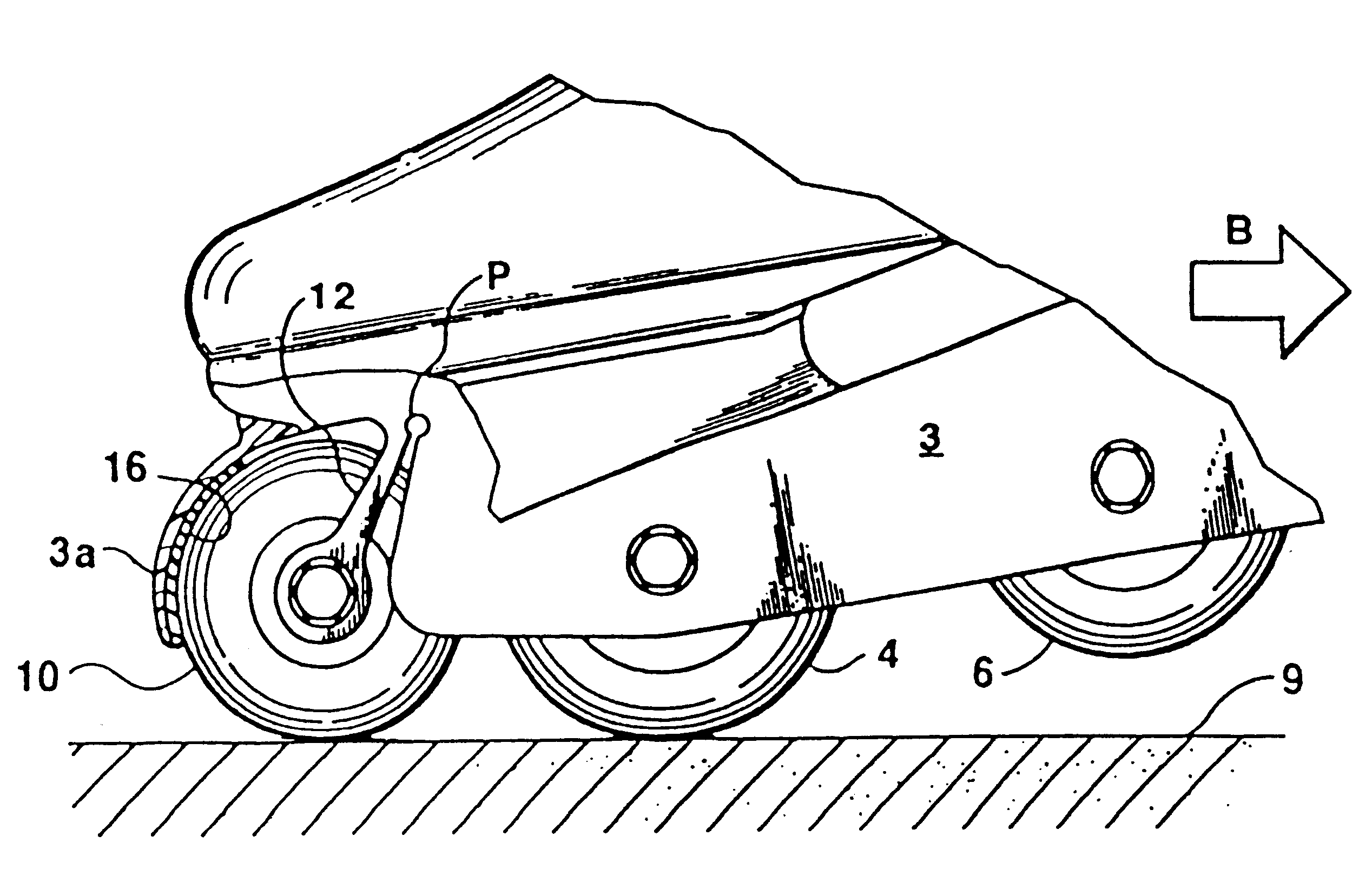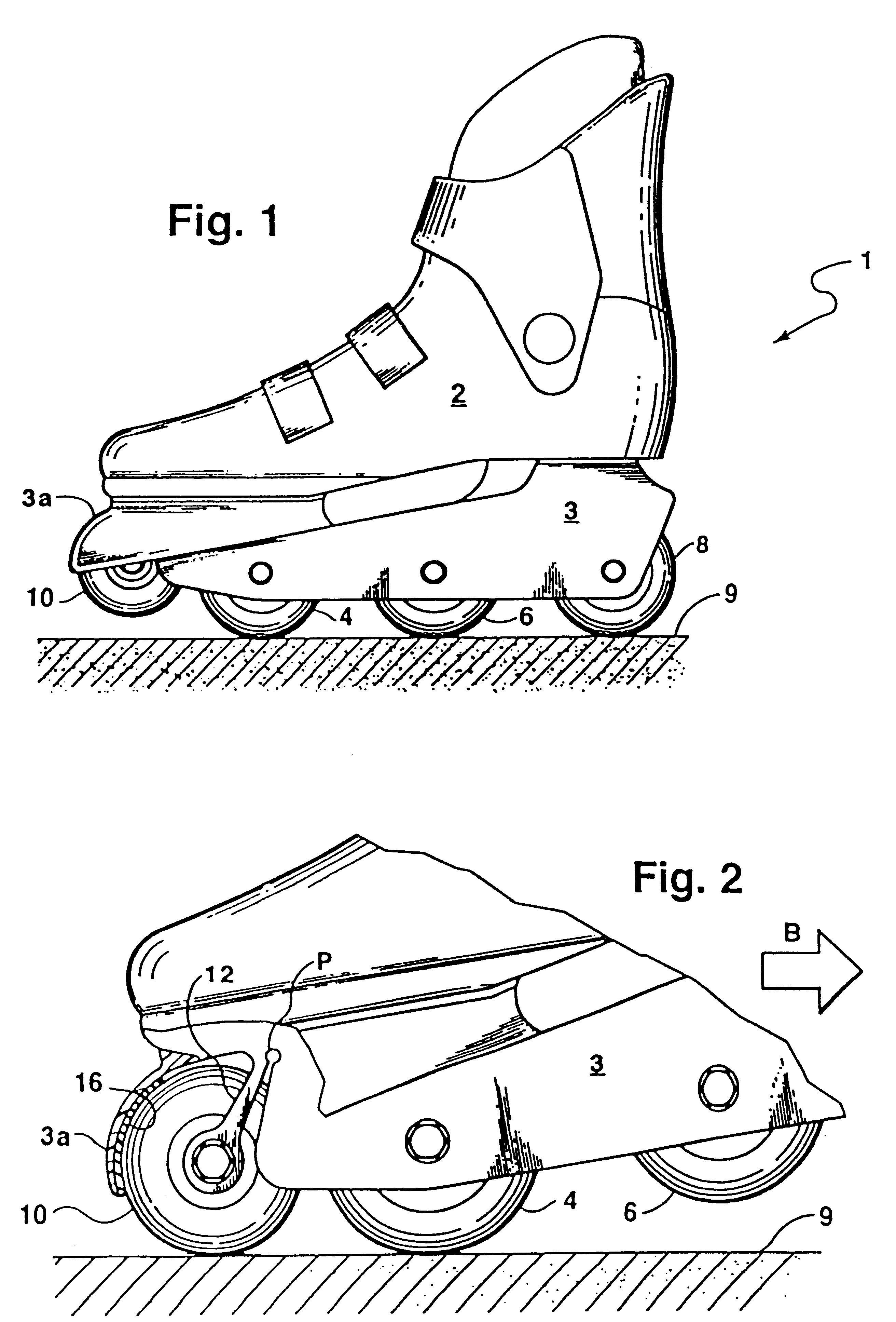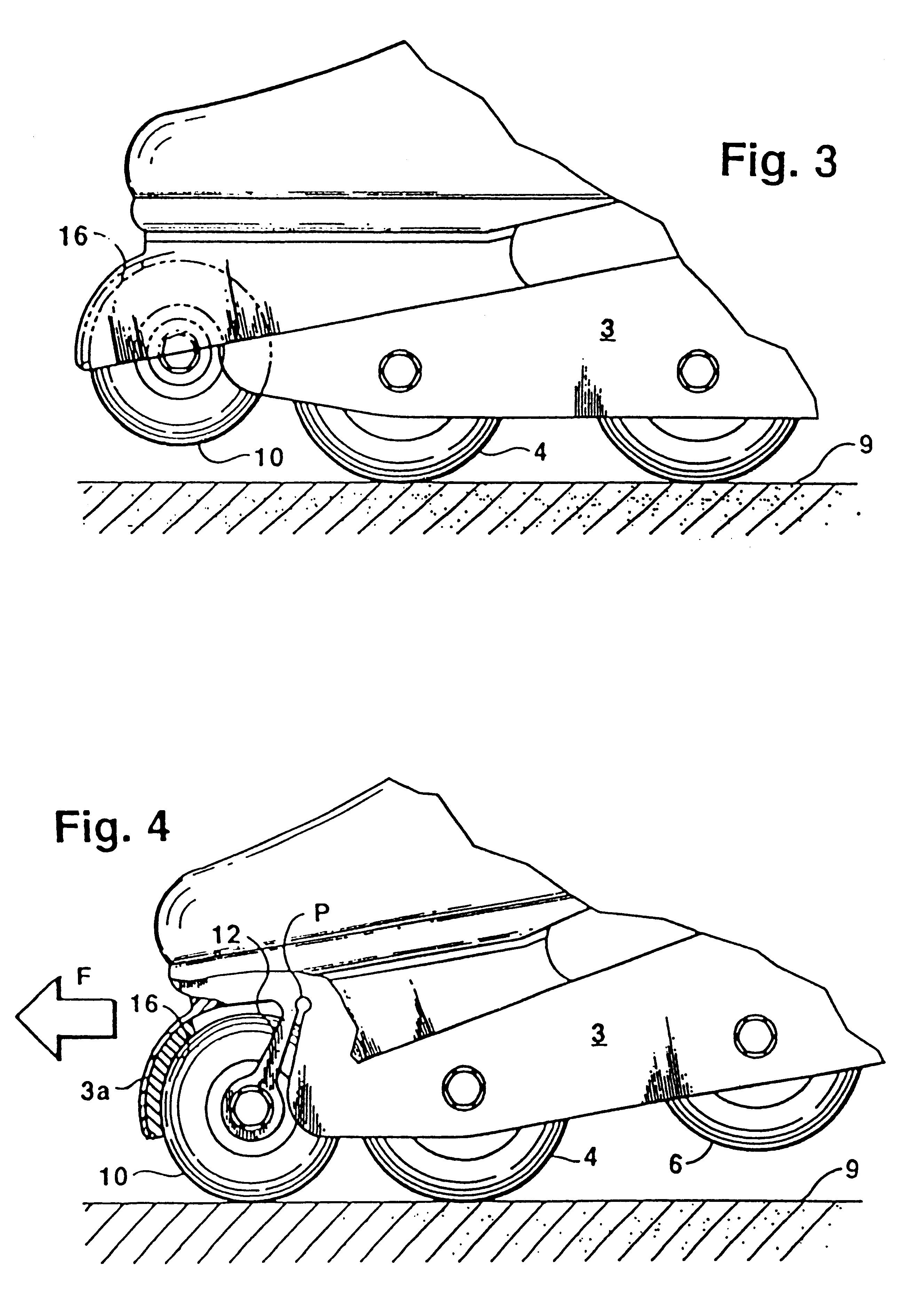Safety brake for in-line skates
a safety brake and in-line skate technology, applied in the direction of skateboards, roller skates, sport apparatus, etc., can solve the problems of affecting the safety of in-line skates, damage to the wheels, and the inability to initiate push start with one's skates aligned,
- Summary
- Abstract
- Description
- Claims
- Application Information
AI Technical Summary
Problems solved by technology
Method used
Image
Examples
Embodiment Construction
)
The detailed description set forth below in connection with the appended drawings is intended as a description of a presently preferred embodiment of the invention and is not intended to represent the only forms in which the present invention may be constructed and / or utilized. The description sets forth the functions and the sequence of steps for constructing and operating the invention in connection with the illustrated embodiments. However, it is to be understood that the same or equivalent functions and sequence may be accomplished by different embodiments that are also intended to be encompassed within the spirit and scope of the invention.
With reference to FIG. 1, a skate such as an in-line skate 1 has a boot 2, a skate frame 3 and three regular wheels 4, 6 and 8 mounted to the frame as is well known in the art. All three of these wheels have the same radius and their centers lie along a common line, such that all three wheels will engage skating surface 9 at the same time. T...
PUM
 Login to View More
Login to View More Abstract
Description
Claims
Application Information
 Login to View More
Login to View More - R&D
- Intellectual Property
- Life Sciences
- Materials
- Tech Scout
- Unparalleled Data Quality
- Higher Quality Content
- 60% Fewer Hallucinations
Browse by: Latest US Patents, China's latest patents, Technical Efficacy Thesaurus, Application Domain, Technology Topic, Popular Technical Reports.
© 2025 PatSnap. All rights reserved.Legal|Privacy policy|Modern Slavery Act Transparency Statement|Sitemap|About US| Contact US: help@patsnap.com



